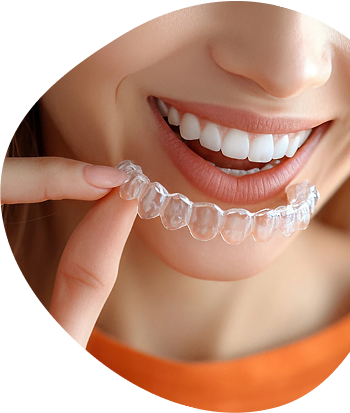Using the wrong technique when brushing can damage your teeth and we want you to know that there is a right way and a wrong way to brush teeth. Many people are surprised to learn that for years, they have been brushing their teeth the wrong way running the risk of stripping the enamel and causing permanent damage.
Most people often take a toothbrush out and use a back-and-forth motion, similar to sawing back and forth until they feel like their teeth are clean and slippery. It may feel as if the faster and harder you brush, the faster you are done brushing and can move on with your day with clean teeth. Reality is that you are scrubbing away precious tooth enamel when brushing this way. The sawing motion is very abrasive to teeth and gums and has potential to age your teeth prematurely. Brushing incorrectly not only runs the risk of stripping the enamel from your teeth but also causes them to become more sensitive to hot and cold temperatures much sooner than they normally would be otherwise.
This method also doesn’t clean as effectively when the bristles are moving back and forth, essentially bouncing from one tooth to the next, missing the spaces in between the teeth. These spaces must be kept clean in order to prevent cavities and gum disease. None of the bristles find their way into the spaces between your teeth to remove plaque and particles of food that can stain or invade the health of the tooth. You are missing the entire goal of brushing when using the sawing method.
The proper brushing technique is really simple, so simple that you might not feel as if you are cleaning your teeth. Some advice from the best Colorado Springs dentist is to have patience, as it’s not easy to re-learn brushing after using one method your entire life. Start this new process by brushing with your non-dominant hand to help relearn this proper method. Switching over to this simple method will take some time, but the results will be more defined.
Begin with placing your toothbrush over a set of the teeth and slightly wiggle it back and forth making sure the bristles cover each tooth and work their way around the sides of the tooth. The goal is to allow the bristles of the toothbrush to find their way into the spaces between the teeth, ensuring that all of the food particles and plaque are removed.
Once you finish one set of teeth as described above, move your toothbrush over to the next set of teeth and repeat the same process moving on to the next set of teeth and so on until you have covered your entire mouth. By brushing your teeth the correct way you will see noticeable results the next time you visit your dentist.
The great thing about this process is that it does not matter how long you have been brushing your teeth the wrong way because you can make that change today. Remember, don’t saw back-and-forth! Use a gentle wiggle motion to prevent your teeth from damage and sensitivity.










.png)


